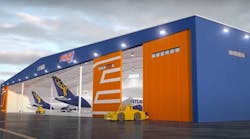Costs vs. Benefits
It's Not What You Pay - It's What You Get That Counts
Small jets
1970: LJ 24, Sabre 40
2000: CJ 2, Premier 1
Engineering efficiency
In other words, today's jets are between one-and-a-half and two times as efficient in converting fuel into distance flown as were the aircraft of 30 years ago! Combining this with the cost of fuel, which adjusted for inflation is no different than it was 30 years ago, means that the net cost of fuel per mile has been cut almost in half in the last 30 years.
This is a spectacular achievement and a real credit to the ingenuity of the designers of the aircraft and the engines. But, how does this apply to the day-to-day business of running a maintenance operation? Well, what this example does is to clearly illustrate the importance of looking not just at the cost, but also at the value or benefits received.
Cost-benefit analysis
The formal name for this analytical approach
is cost-benefit analysis and the concept extends to overhauls, upgrades, service bulletins, tools, test equipment and contract services. For example, the OEM manufacturers offer a never-ending stream of service bulletins and upgrades, that, if you believe the literature, you cannot possibly live without. The downside is that all these service bulletins and upgrades cost money - sometimes a lot of money. The best way to analyze whether your operation can benefit from a particular service bulletin or upgrade is to do a cost- benefit analysis. This is accomplished by listing all the advantages (benefits) and disadvantages (costs) on a piece of paper and then assigning a dollar value to each. Once the dollar values are assigned, the alternatives can be weighed against each other and a rational decision can be made.
Doing the math
For instance, consider a component with
a TBO of 1,500 hours and an overhaul cost of $7,500. The OEM has a service bulletin available that increases the TBO to 2,500 hours and the overhaul cost at that point is $10,000. Thus, the cost of overhaul for this component decreases from $5/hour to $4/hour with the addition of the service bulletin. However, the service bulletin costs $5,000. What this means is that the value to your operation of this service bulletin becomes a function of how many more times you will be overhauling this component. If the $5,000 cost is spread over one overhaul, the net cost is $6/hour [($10,000 + $5,000)/2,500], which is more than the cost per hour if the service bulletin is not applied! If the cost is spread over two additional overhauls, the net cost per hour will be $5/hour. It is only if the cost of the service bulletin is spread over three additional overhauls that the net cost per hour decreases to $4.67/hour, which is below the current cost. Three overhauls equates to 7,500 flight hours. At a typical corporate utilization of 500 hours per year, this equals 15 years. Therefore, this service bulletin is probably not justified for this operation. On the other hand, for a
regional airline flying 2,500 hours per year, the lower costs would be achieved in three years, which probably justifies the additional expense.
In short, the key is to focus not just on either the cost or the benefits, but to weigh both so that you can establish
the real value for your operation.




